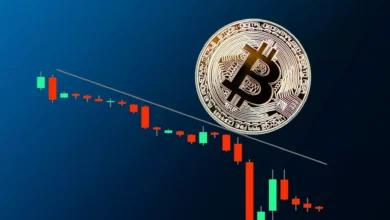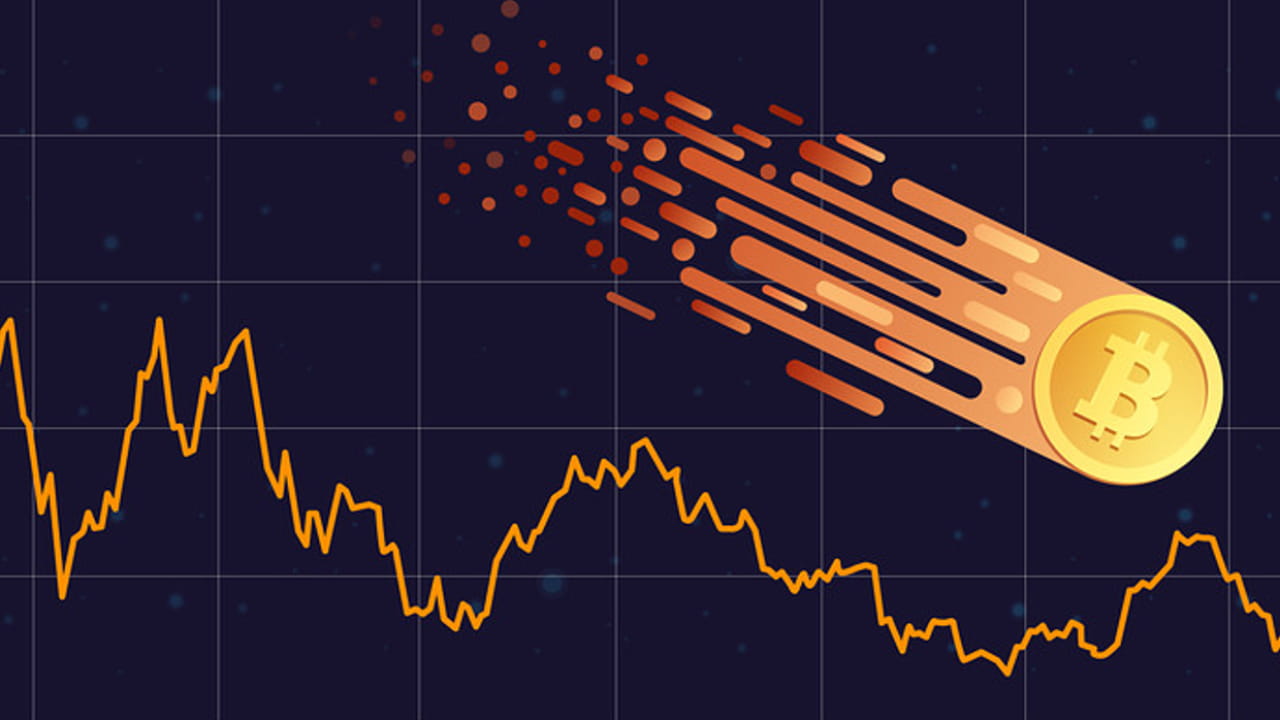
Master Bitcoin Future Account Setup 5 Essential Steps
The Bitcoin futures market has emerged as one of the most dynamic and profitable segments of cryptocurrency trading in 2025. As digital assets continue to gain mainstream adoption, Bitcoin Future account setup has become a critical skill for both novice and experienced traders seeking to capitalize on market volatility without directly holding the underlying cryptocurrency. Understanding how to properly establish and configure your Bitcoin futures trading account can be the difference between successful trading and costly mistakes.
Bitcoin futures trading offers unique advantages over spot trading, including the ability to profit from both rising and falling markets, leverage opportunities, and sophisticated hedging strategies. However, the complexity of futures markets means that proper account setup and configuration are paramount to success. Many traders rush into the market without adequately preparing their trading environment, leading to suboptimal performance and unnecessary risks.
This comprehensive guide will walk you through the 5 essential steps for mastering your Bitcoin Future account setup, covering everything from platform selection and verification processes to advanced security configurations and trading preparation. Whether you’re a complete beginner looking to enter the crypto derivatives market or an experienced trader seeking to optimize your setup, this guide provides the detailed roadmap you need.
The Bitcoin futures market operates 24/7, offering unprecedented trading opportunities across global time zones. With proper account setup, traders can access advanced features like margin trading, stop-loss orders, and automated trading strategies. We’ll explore each critical component of the setup process, ensuring you understand not just what to do, but why each step matters for your trading success.
By the end of this guide, you’ll have a complete understanding of how to establish a professional-grade Bitcoin futures trading account that supports your trading objectives while maintaining the highest security standards. Let’s dive into the essential steps that will set you up for success in the exciting world of cryptocurrency futures trading.
1. Choosing the Right Bitcoin Futures Trading Platform
Selecting the appropriate Bitcoin futures trading platform forms the foundation of your entire trading experience. The platform you choose will determine your access to markets, available tools, fee structure, and overall trading capabilities. In 2025, the landscape of crypto futures exchanges has evolved significantly, offering traders more options than ever before.
Key Platform Features to Consider
When evaluating Bitcoin futures platforms, prioritize exchanges that offer robust liquidity, competitive fee structures, and comprehensive trading tools. Leading platforms now provide $1 minimum trade sizes, negative balance protection, and user-friendly dashboards specifically designed for futures trading. These features make Bitcoin futures trading accessible to traders with varying capital levels and risk tolerances.
Look for platforms that provide advanced order types, including stop-loss, take-profit, and trailing stop orders. These tools are essential for effective risk management in the volatile cryptocurrency futures market. Additionally, ensure your chosen platform offers real-time market data, detailed charts, and technical analysis tools that support informed trading decisions.
Regulatory Compliance and Security
Choose platforms that operate under proper regulatory oversight and maintain strong security protocols. Reputable exchanges provide regulated environments for Bitcoin futures trading, offering safe and centralized marketplaces where traders can implement their strategies while going long or short to take advantage of daily price swings. This regulatory compliance ensures your funds are protected and that the platform adheres to industry best practices.
Security features should include two-factor authentication (2FA), cold storage for user funds, and regular security audits. The platform’s track record of handling security incidents and customer fund protection should be thoroughly researched before committing to any exchange.
Platform Comparison and Selection
Research multiple platforms to compare their fee structures, available markets, and user experiences. Consider factors such as margin requirements, leverage options, and the quality of customer support. Some platforms specialize in retail traders while others cater to institutional clients, so ensure your chosen platform aligns with your trading style and account size.
Test the platform’s demo or paper trading features before committing real capital. This allows you to familiarize yourself with the interface, test trading strategies, and evaluate the platform’s performance during different market conditions.
2. Account Registration and Verification Process
The account registration process for Bitcoin futures trading requires careful attention to detail and compliance with Know Your Customer (KYC) regulations. This step establishes your legal trading relationship with the exchange and determines your access levels and trading limits.
Initial Registration Steps
Begin by visiting your chosen platform’s official website and locating the account registration section. The process typically starts with opening an account using your email address, choosing a secure nickname and strong password, then confirming your email through a verification link. Ensure you use a secure email address that you have exclusive access to, as this will be your primary communication channel with the exchange.
Create a strong password that combines uppercase and lowercase letters, numbers, and special characters. Avoid using easily guessable information such as birthdates or common words. Consider using a password manager to generate and store your credentials securely.
Identity Verification Requirements
Most reputable Bitcoin futures platforms require identity verification to comply with anti-money laundering (AML) and KYC regulations. Prepare the following documents for the verification process:
- Government-issued photo identification (passport, driver’s license, or national ID)
- Proof of address (utility bill, bank statement, or lease agreement dated within the last 3 months)
- Additional documentation may be required for higher verification tiers
The verification process typically takes 24-48 hours, but can extend longer during periods of high demand. Higher verification levels usually unlock increased trading limits, withdrawal privileges, and access to advanced features.
Account Security Configuration
Once your basic account is established, immediately configure security settings. Enable two-factor authentication (2FA) using an authenticator app rather than SMS when possible, as app-based 2FA provides superior security against SIM swapping attacks. Set up withdrawal whitelists to restrict fund transfers to pre-approved addresses only.
Configure login notifications to receive alerts whenever your account is accessed from new devices or locations. Review and customize your communication preferences to ensure you receive important updates about your account and the platform.
3. Funding Your Bitcoin Futures Account

Proper account funding is crucial for successful Bitcoin futures trading. Understanding the various funding methods, associated fees, and timing considerations will help you optimize your trading capital and minimize unnecessary costs.
Funding Methods and Options
Modern Bitcoin futures platforms offer multiple funding options to accommodate different user preferences and geographical locations. Common funding methods include:
Bank transfers provide the most cost-effective way to deposit large amounts, but may take several business days to process. Credit and debit card deposits offer immediate availability but typically carry higher fees. Cryptocurrency deposits from external wallets usually process within minutes to hours, depending on network congestion and confirmation requirements.
Many platforms now offer quick funding options with near-instant settlement after funding your spot account, making it easier to transfer collateral to your derivatives trading account. This seamless integration between spot and futures accounts enhances trading flexibility and capital efficiency.
Understanding Margin Requirements
Bitcoin futures trading operates on a margin system, meaning you only need to deposit a fraction of the contract’s full value. Initial margin requirements typically range from 5% to 50% of the contract value, depending on the platform and your account tier. Maintenance margin levels determine when you’ll receive margin calls or face automatic liquidation.
Calculate your funding needs based on your intended position sizes and risk management strategy. Maintain an adequate account balance to handle normal market fluctuations without triggering margin calls. Consider the impact of funding fees on leveraged positions, especially for longer-term trades.
Fee Structure Analysis
Thoroughly understand your platform’s fee structure before funding your account. Advanced platforms now use competitive pricing models, such as 0.5 bps notional pricing on all trades for all traders, which can significantly impact your trading profitability over time.
Consider maker/taker fee structures, where limit orders that add liquidity to the order book (maker orders) receive rebates or lower fees, while market orders that remove liquidity (taker orders) pay higher fees. Factor these costs into your trading strategy and position sizing calculations.
4. Security Setup and Risk Management Configuration
Implementing robust security measures and risk management protocols protects your capital and ensures sustainable trading performance in the volatile Bitcoin futures market. These configurations form the backbone of professional trading operations.
Advanced Security Measures
Beyond basic 2FA, implement device whitelisting to restrict account access to approved devices only. Configure API security settings if you plan to use automated trading systems or third-party applications. Create separate API keys for different functions (trading, reading, withdrawal) and regularly rotate these credentials.
Establish withdrawal restrictions, including daily limits, approval delays, and notification requirements. Use cold storage solutions for funds not actively needed for trading. Consider setting up time-locked withdrawals that require a cooling-off period before funds can be moved.
Risk Management Tools Configuration
Configure automatic stop-loss orders and position size limits to prevent catastrophic losses. Modern platforms offer negative balance protection, which prevents your account from going below zero even during extreme market movements. Understand how this protection works and its limitations.
Set up portfolio alerts for significant price movements, margin level warnings, and unusual account activity. Configure maximum leverage limits based on your risk tolerance and trading experience. Many professional traders recommend starting with lower leverage ratios and gradually increasing as you gain experience and confidence.
Emergency Procedures and Backup Plans
Develop contingency plans for various scenarios, including platform outages, market crashes, and personal emergencies. Maintain access to multiple communication channels with your platform, including phone support and alternative trading interfaces.
Create backup access methods for your account, including recovery codes and alternative authentication devices. Document your trading passwords, API keys, and recovery information in a secure manner, preferably using a professional password manager with offline backup capabilities.
5. Interface Customization and Trading Preparation

Optimizing your trading interface and preparing your trading environment significantly impacts your performance and decision-making capabilities in the fast-paced Bitcoin futures market.
Trading Dashboard Configuration
Customize your trading dashboard to display the most relevant information for your trading strategy. Arrange price charts, order books, position summaries, and account information in a logical layout that minimizes the time needed to assess market conditions and execute trades.
Configure multiple timeframe charts to analyze both short-term price action and longer-term trends. Set up technical indicators that align with your trading methodology, avoiding overcrowding your charts with excessive information that could lead to analysis paralysis.
Order Management Setup
Configure default order types and position sizes that match your typical trading patterns. Set up order templates for common trade setups to speed up execution during time-sensitive market opportunities. Learn to use advanced order types to choose your market direction and open long or short positions based on your market analysis.
Establish alert systems for price levels, volume changes, and technical indicator signals that align with your trading strategy. Configure these alerts across multiple devices to ensure you never miss important market developments.
Trading Strategy Implementation
Develop and backtest your trading strategies using the platform’s simulation features before risking real capital. Document your trading rules, risk parameters, and performance metrics to maintain consistency and enable continuous improvement.
Consider the tax implications of futures trading, as it may benefit from 60/40 tax rules, with 60% of gains taxed at long-term capital gains rates. Consult with a tax professional to understand how futures trading fits into your overall tax strategy.
Performance Monitoring and Analysis
Set up performance tracking systems to monitor your trading results, identify patterns, and optimize your strategies. Use the platform’s reporting tools to analyze your profit/loss, win rates, and risk-adjusted returns. Regular performance analysis helps you identify strengths and weaknesses in your trading approach.
Maintain detailed trading logs, including the rationale for each trade, market conditions, and lessons learned. This documentation becomes invaluable for improving your trading performance and maintaining discipline during challenging market periods.
Also Read: Bitcoin Future Minimum Deposit Revolutionary $250 Start Guide
Conclusion
Mastering Bitcoin Future account setup requires careful attention to platform selection, thorough verification processes, proper funding strategies, robust security measures, and optimized trading environments. These 5 essential steps form the foundation for successful Bitcoin futures trading in 2025’s dynamic cryptocurrency markets.
By following this comprehensive guide, you’ll establish a professional trading infrastructure that supports your financial goals while maintaining the highest security standards. Remember that successful futures trading combines technical preparation with ongoing education, disciplined risk management, and continuous strategy refinement. Take time to properly implement each step, and you’ll be well-positioned to capitalize on the opportunities available in the exciting world of Bitcoin futures trading.







